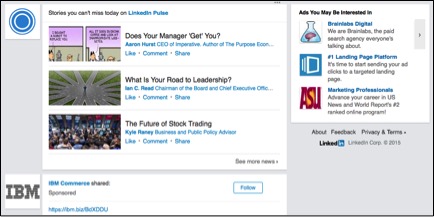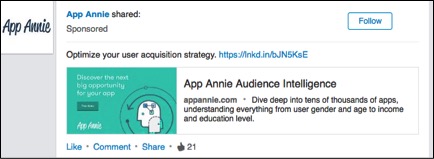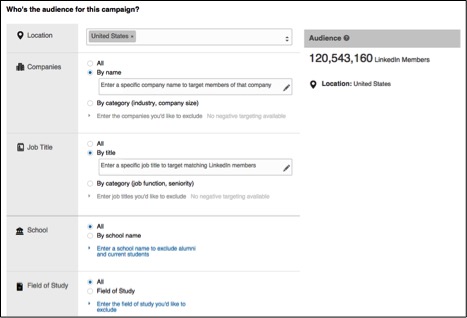Google. Bing. Facebook. Twitter.
These platforms usually make the short list when it comes to spending hard earned advertising dollars. Whether it’s because they’ve been in the game for a long time (Google) or are the next big thing (Twitter), these platforms usually are the focus of PPC marketers.
Can you spot what’s missing?
LinkedIn.
Maybe a social network geared towards professionals just isn’t as “cool” as the rest, but it deserves a place in your paid search portfolio. It isn’t without its issues (what platform isn’t), but used under the right pretenses it can serve your needs in ways other platforms can’t.
So why do I say LinkedIn should make the cut when considering PPC tools? To me there really are two fundamental reasons: content of the site itself and rich targeting options.
LinkedIn calls itself the world’s largest professional network. It’s a tool used by people to find jobs, list details about their professional background, and network with other professionals. Notice a word I keep using? Professional. In contrast to other social networks, LinkedIn is built around the very serious topic of building your career. It’s not about sharing cat videos or family photos.
It is also safe to assume that when people are logged into LinkedIn, they are in a very different mindset than when they are surfing through Facebook and Twitter or searching on Google. That mindset – that professional mindset, is what can make LinkedIn unique among other social networks. It allows marketers to reach people in a frame of mind they might not otherwise be able to reach.
Since people use LinkedIn to network and build careers, they have an incentive to fill out their profiles with accurate and recent information.
How is this information valuable to a paid search marketer?
In the same way it’s valuable to recruiters, job seekers, and everyone in between. Rich profile data gives marketers insights that can be used to target very specific audiences.
So how do we use this data in practice?
Let’s focus on two advertising tools that are the most recognizable to the average user: LinkedIn Ads and Sponsored Content.
LinkedIn Ads
If you’ve created ads in AdWords or Bing Ads, this format will be very familiar to you.

You create your ad by writing a headline and some description lines, adding a thumbnail image, and attaching a destination URL.

These ads appear along the right side of the feed. One unique feature is that as users scroll down their feed, the ads scroll with them, always present.
Sponsored Content
This type of ad appears directly in user feeds and follows the same format as other types of content.

Sponsored Ads come in two flavors: Sponsored and Direct Sponsored. Sponsored allows you to advertise updates from your LinkedIn page into the feeds of targeted users. Direct Sponsored allows you to create content that isn’t on your LinkedIn page and put that into the feed of targeted users.
The upside of this type of ad is that being in the feed puts it more in front of users and increases its chances of being clicked. My own experience running these ads bears this statement out.
So that’s how you craft messages and content that is user facing on LinkedIn. Now lets see how you find those users, potentially LinkedIn’s greatest tool.
Finding The Right Audience

Any item that could potentially be on a users profile page is targetable when using LinkedIn’s advertising platform. Besides the location, age, and gender targeting that is common to all platforms, you can also target items such as:
- Field of study
- Place of employment,
- Job title
- School attended
- Groups
- Industry
Need to target your message to directors of marketing in the manufacturing industry in the state of Texas? You can do that with LinkedIn.
Want to put your product in front of project managers in the state of California from the IT industry that went to Stanford? Yup, you sure can do that with LinkedIn.
In fact you can use LinkedIn’s targeting to alter your audience in any way you see fit. The more granular you get, the smaller and more targeted your audience becomes. Just be careful you still have an audience left at the end.
Final Thoughts
Are there issues with LinkedIn? Sure.
For both of the above ad types there are minimum bids, which can make LinkedIn pricey in comparison to other platforms. The reporting is lacking compared to more mature networks like AdWords and at this time it doesn’t have some of the more advanced tools like retargeting.
So what does it all mean?
LinkedIn has some real positives. I’ve mentioned that the mindset of its users paired with its targeting options creates a unique way to reach very specific audiences. If you’re in the B2B space or your business involves recruiting of any type then LinkedIn is definitely worth a test.
It might not be the “hippest” platform around, but with the proper strategy and optimizations, LinkedIn can provide value to a balanced paid search portfolio.



